LOVE CHIBA
Blogger
Enjoy cooking one of the freshest seafood in Katsuura, Chiba
When traveling around the world, cheap and exotic local produce and fresh seafood are often something that tries to awaken your inner chef, yet especially in Japan, it is often impossible to "cook on the go", leaving these beautiful ingredients somewhat a privilege of the locals. Keeping in your suitcases kilograms of cooking utensils may seem a workaround but trust me it is a huge burden when you drag it around, and don't even think to carry cooking gas onto planes!!
Katsuura is about 1 hr 40 mins on the Express train from Tokyo. This pacific-facing fishing village is a small one, but it is home to one of the four oldest morning markets in Japan, the other three being Washima, Takayama and Yobiko. Perhaps what makes this market so special is its proximity to Katsuura fishing port, a mere 5 mins walk away.
A port where fishes can fly! 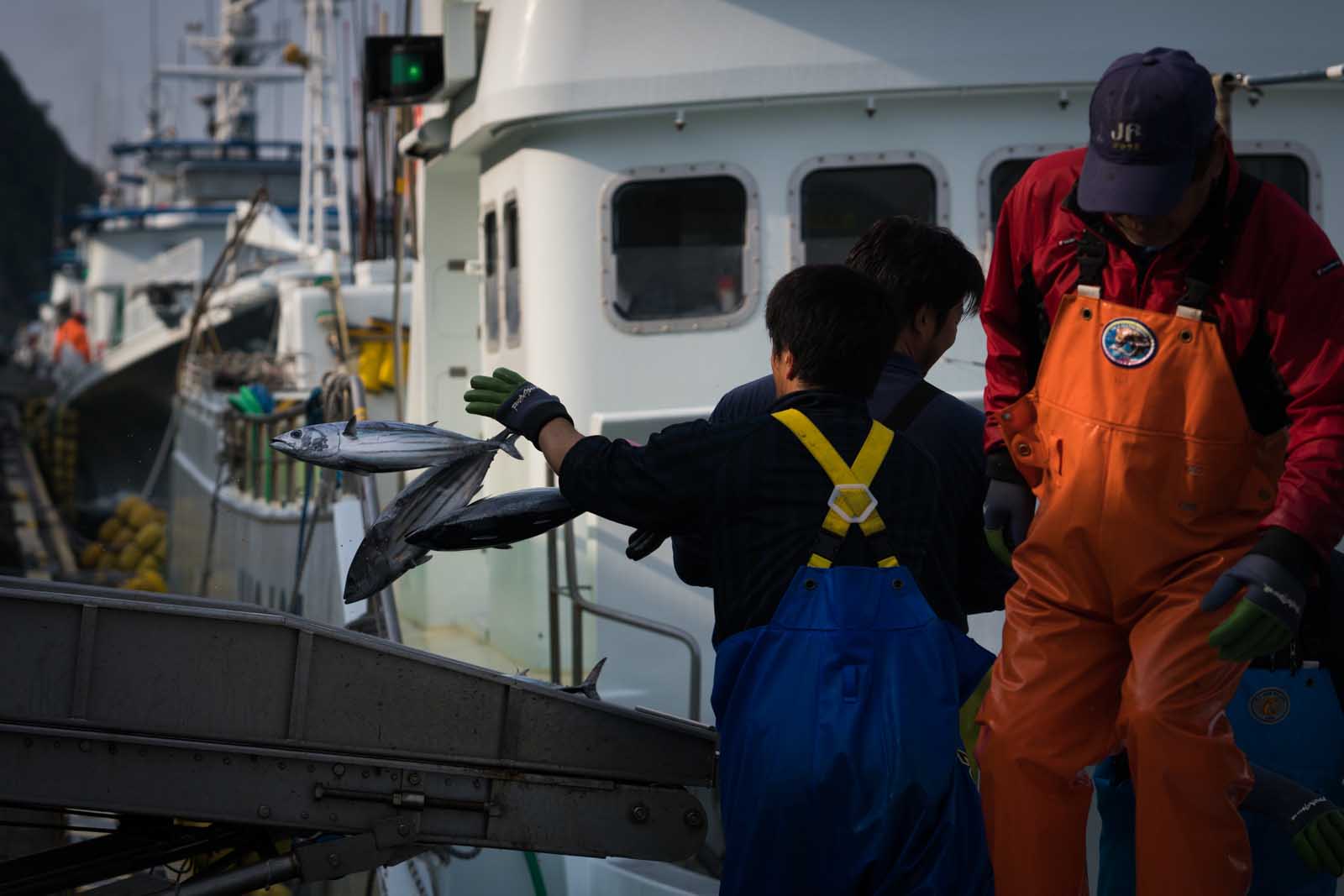
Arriving in Katsuura in early morning, it is all congested with fishing boats, about a line of 8, hurrying to unload their catches while others wait politely slightly offshore, locals said this fishing port operates 24 hrs in theory, but between 5-9 in the morning is the busiest hours, and it is rare to see actual operations past 2p.m.
Katsuura Port is one of the largest ports in Chiba, and also THE largest port for Katsuo (Bonitos) in the Greater Kanto Area, in other words, a huge share of Bonitos you see in big cities like Tokyo and Yokohama comes from this port! Even the official logo KAPPI is designed after the fish, this is Katsuo town!
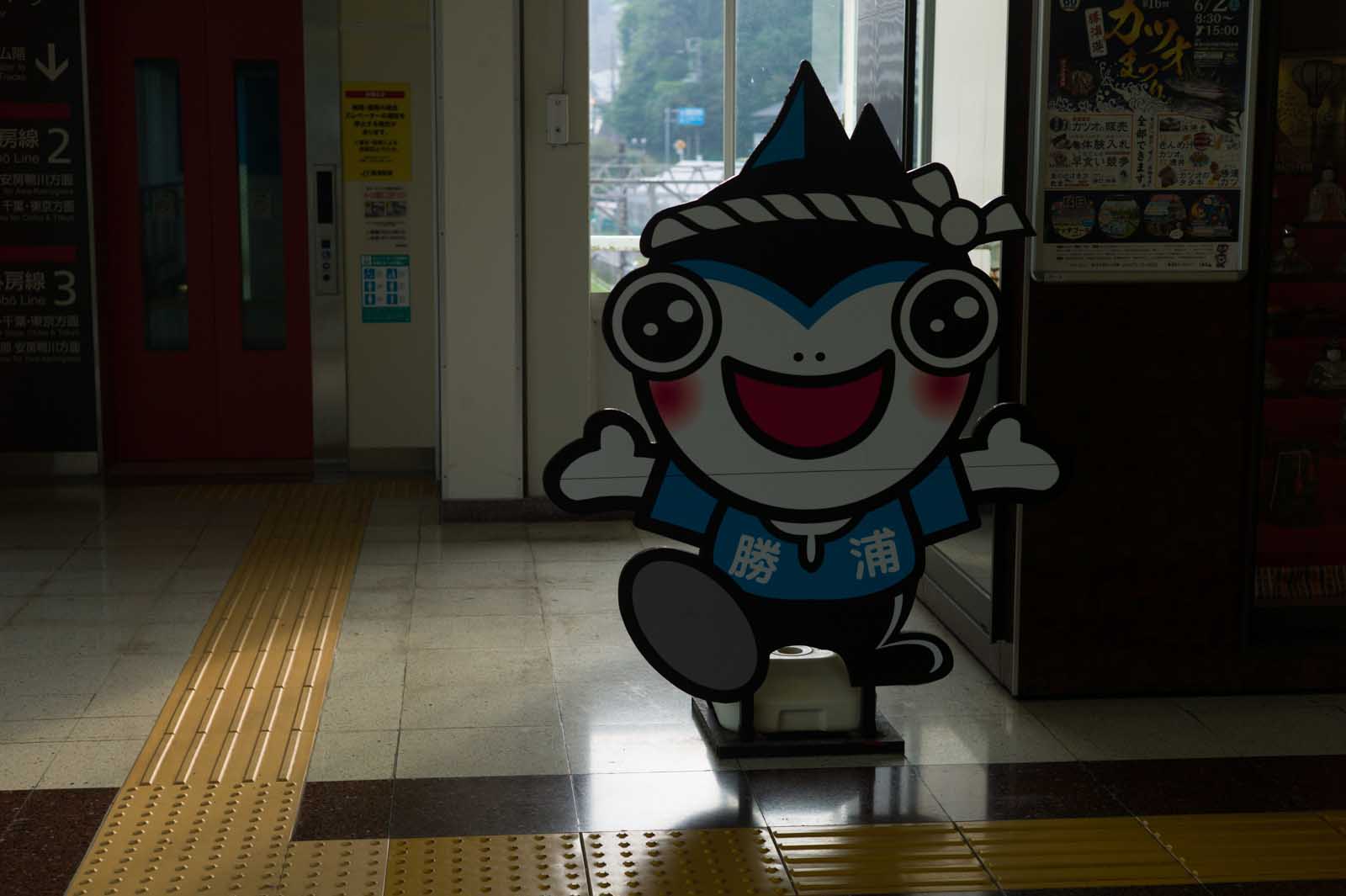
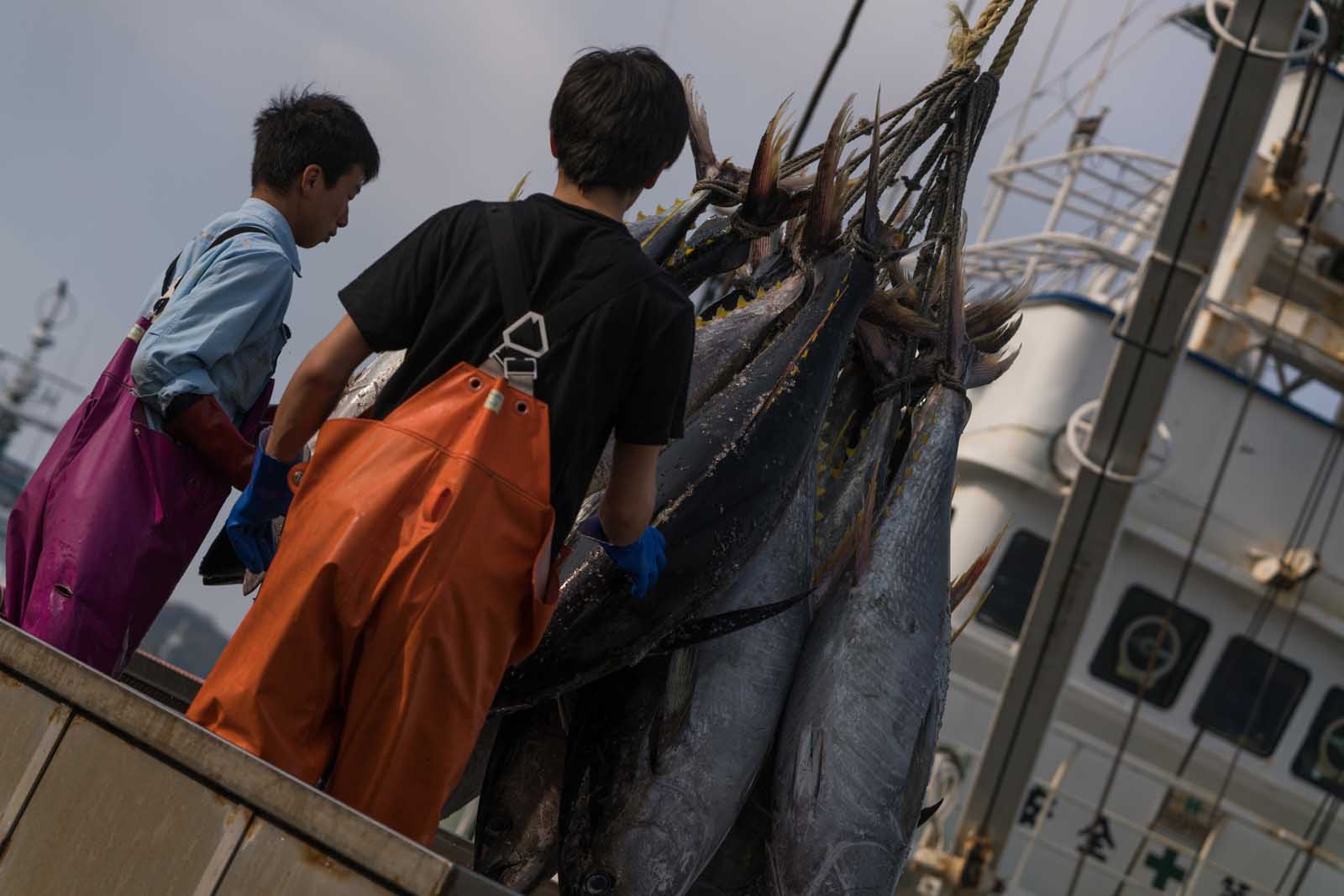
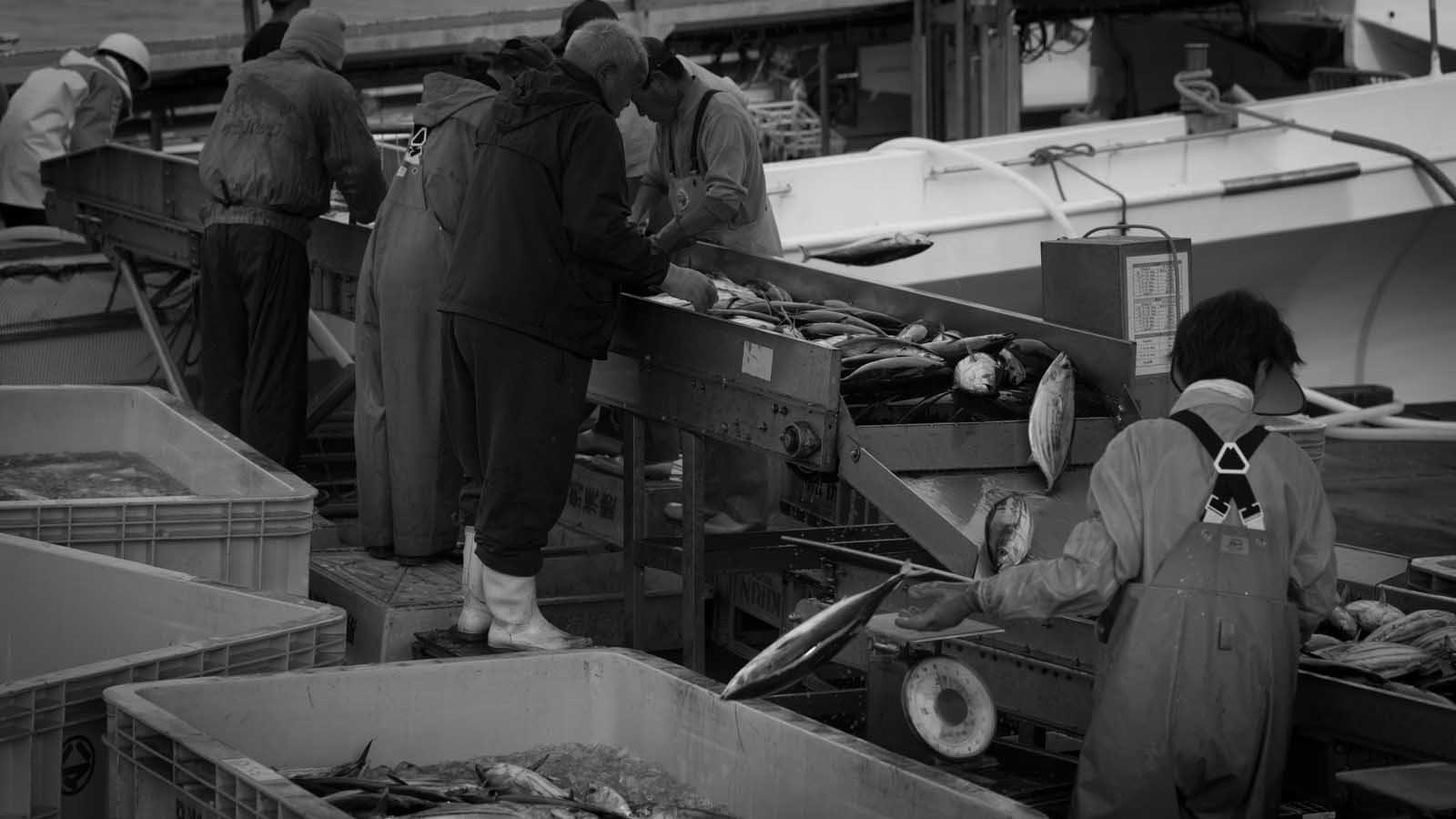
The landing of yellow fin tunas, these are caught further away from the coast, I believe there are more than 100 of these per load. May is the Bonito season, and you can see workers working at Japan-speed, throwing Bonitos around into ice buckets like they are flying!
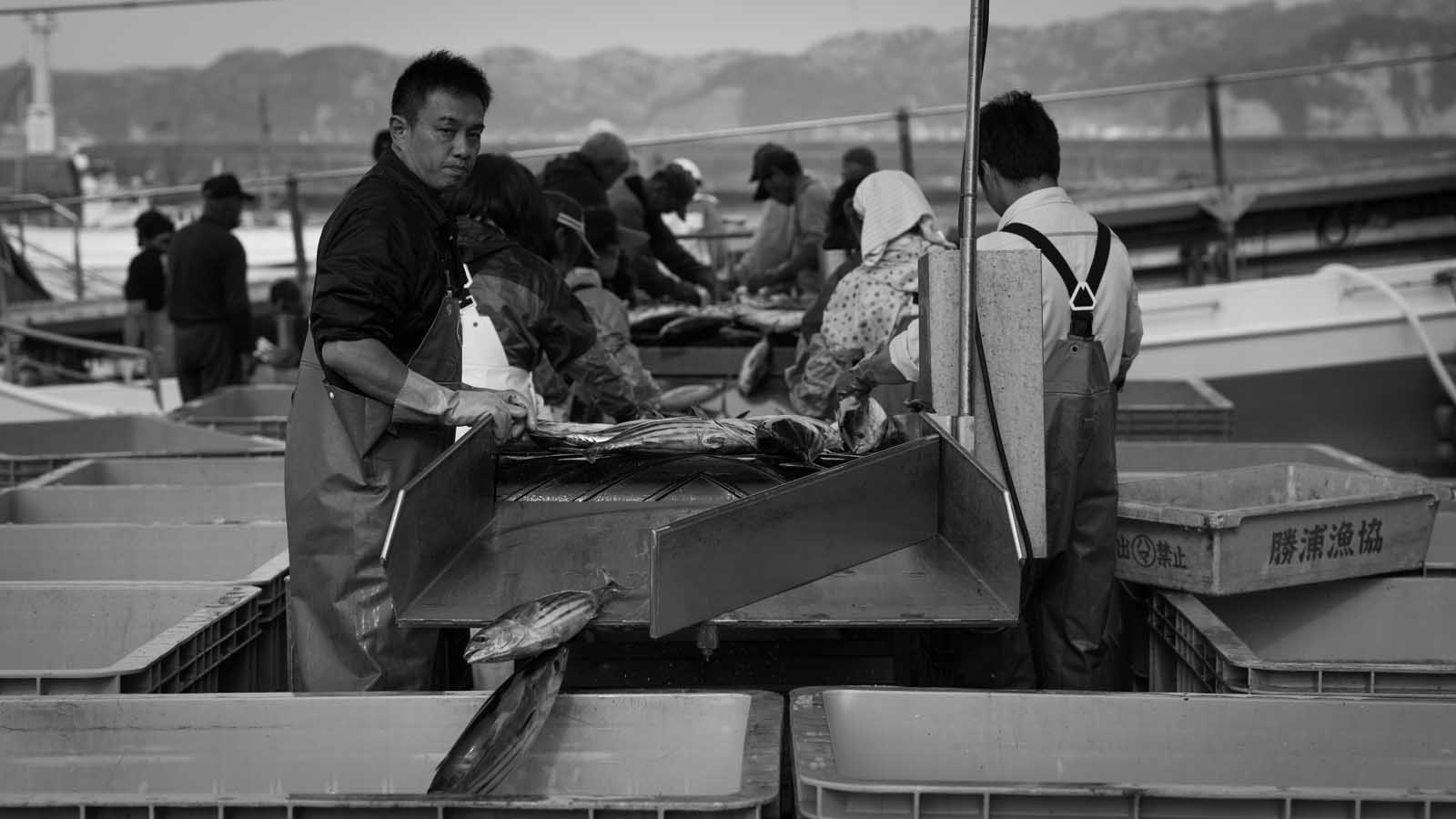
Ice buckets are filled very quickly, and the carts can sometimes be as fast as those on roads! Do be careful both not to get knocked or causing trouble to the locals, as they can be in great hurry! In addition, tripods are prohibited within the port area.
A fisherman repairing the boat's fishing rods. Hatsukatsuo, or the "spring-bonitos swimming north" are paid a premier if and only if they show no signs of damages of scars. This is why all bonitos unloaded here are fished out of the sea one by one by hand! This practice also helps protecting the population from over-fishing and avoid leaving behind broken fish nets.
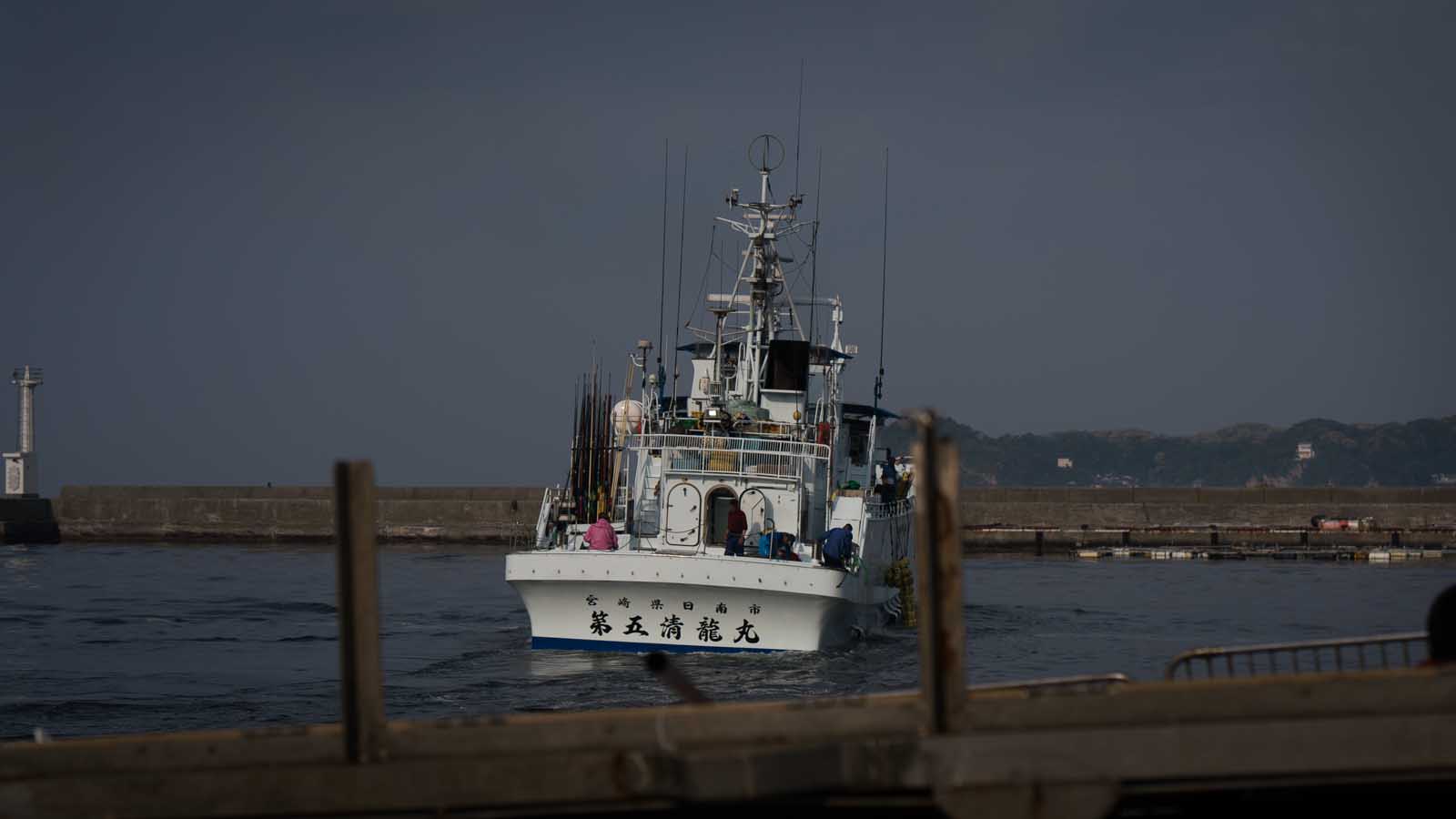
Unloaded and off again! Like this boat from Miyazaki, Kyushu, Hatsukatsuo fishing is a huge yearly event that boats from Chiba alone are not enough. Boats from southern parts of Japan are often seen chasing the crowd northwards, sometimes until they reach the icy waters of Aomori. Pass Katsuura, the next port will be Kesennuma in Miyagi, where bonitos will still be abundant, but slightly fatter!
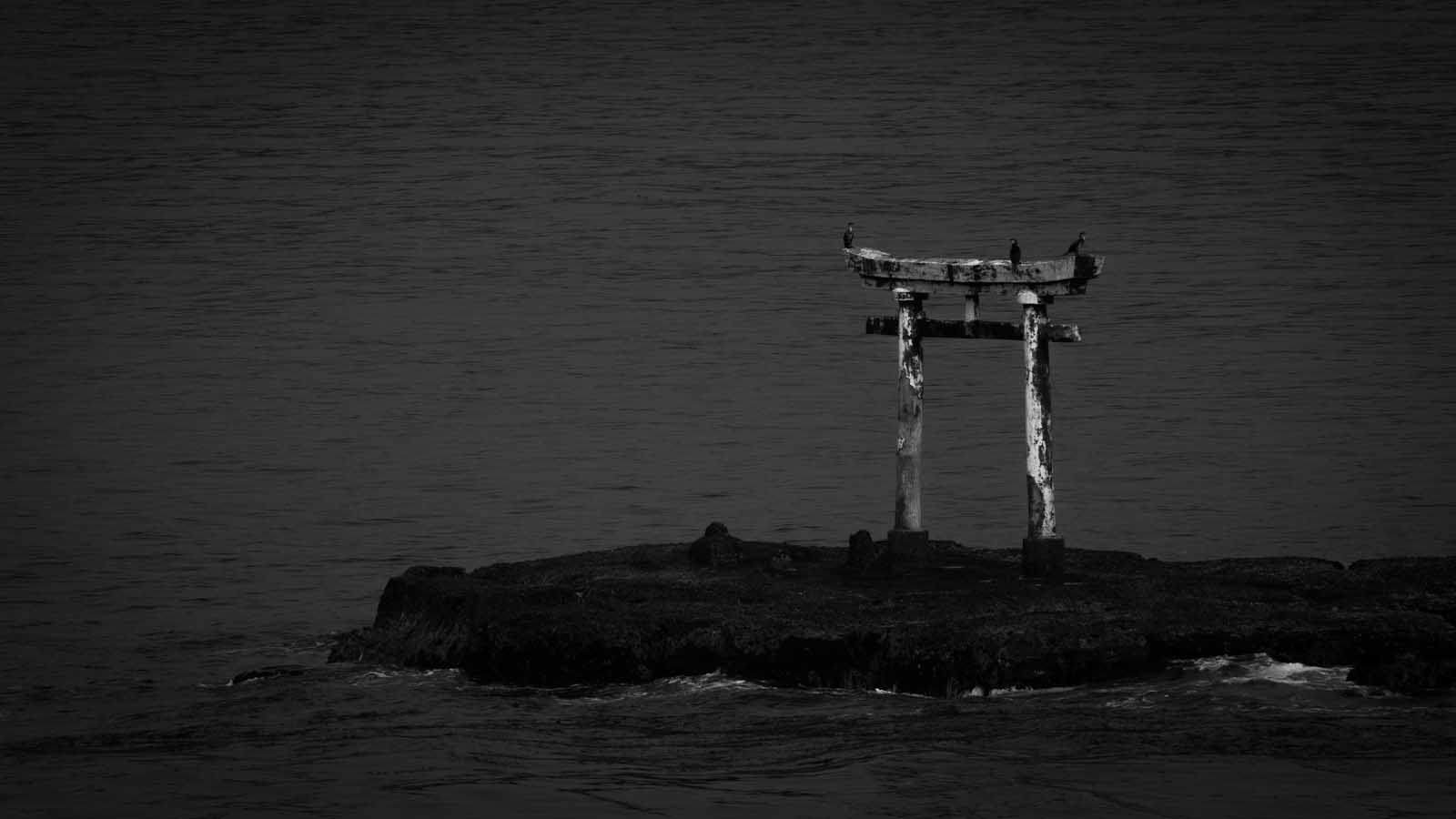 There is a Shrine on the rock just off the port, fishing boats, especially seafaring ones, often circles this shrine before its long trip out on the ocean, as a charm of safety and a good catch.
There is a Shrine on the rock just off the port, fishing boats, especially seafaring ones, often circles this shrine before its long trip out on the ocean, as a charm of safety and a good catch.
A morning market that never changes 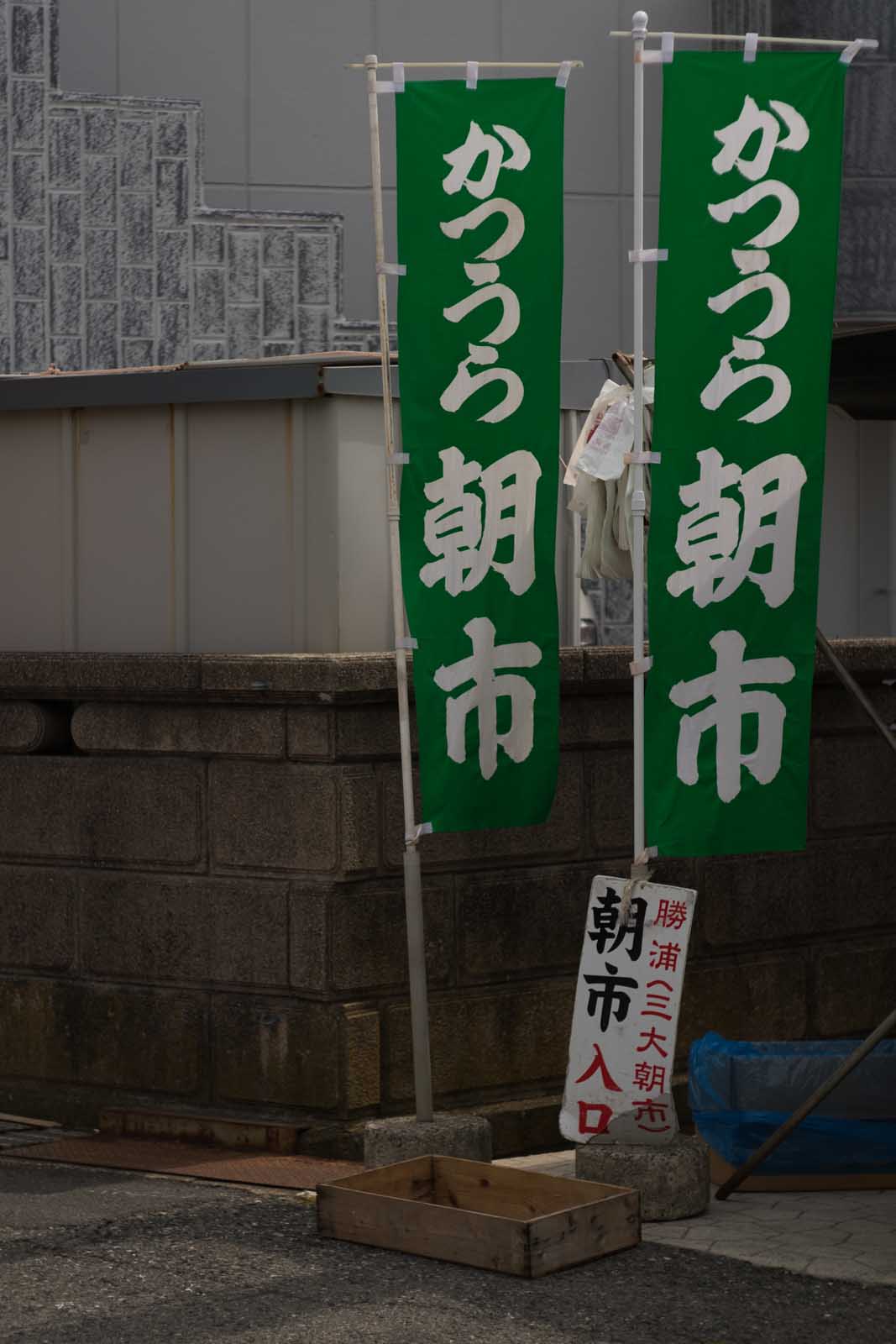 The Katsuura Morning Market had been supporting the kitchens of the locals for 4 centuries, apart from swordfishes, tunas and sardines, this port is best known for its Katsuo (Bonitos). Bonitos from here are second to no other bonitos in Kanto in terms of freshness, fattiness and price!
The Katsuura Morning Market had been supporting the kitchens of the locals for 4 centuries, apart from swordfishes, tunas and sardines, this port is best known for its Katsuo (Bonitos). Bonitos from here are second to no other bonitos in Kanto in terms of freshness, fattiness and price!
In addition, the sea-eroded pacific coast is also home to countless species of shells and seaweeds, such as Abalones, Turban Shells, Sea urchins and seaweeds of all kinds. On the hills, warm wind from the pacific gives life to wild and farmed vegetables and fruits. This unique set of climate defines the local cuisine a little differently from elsewhere in Kanto.

The Amanatsu orange tastes somewhat between grapefruit and orange.
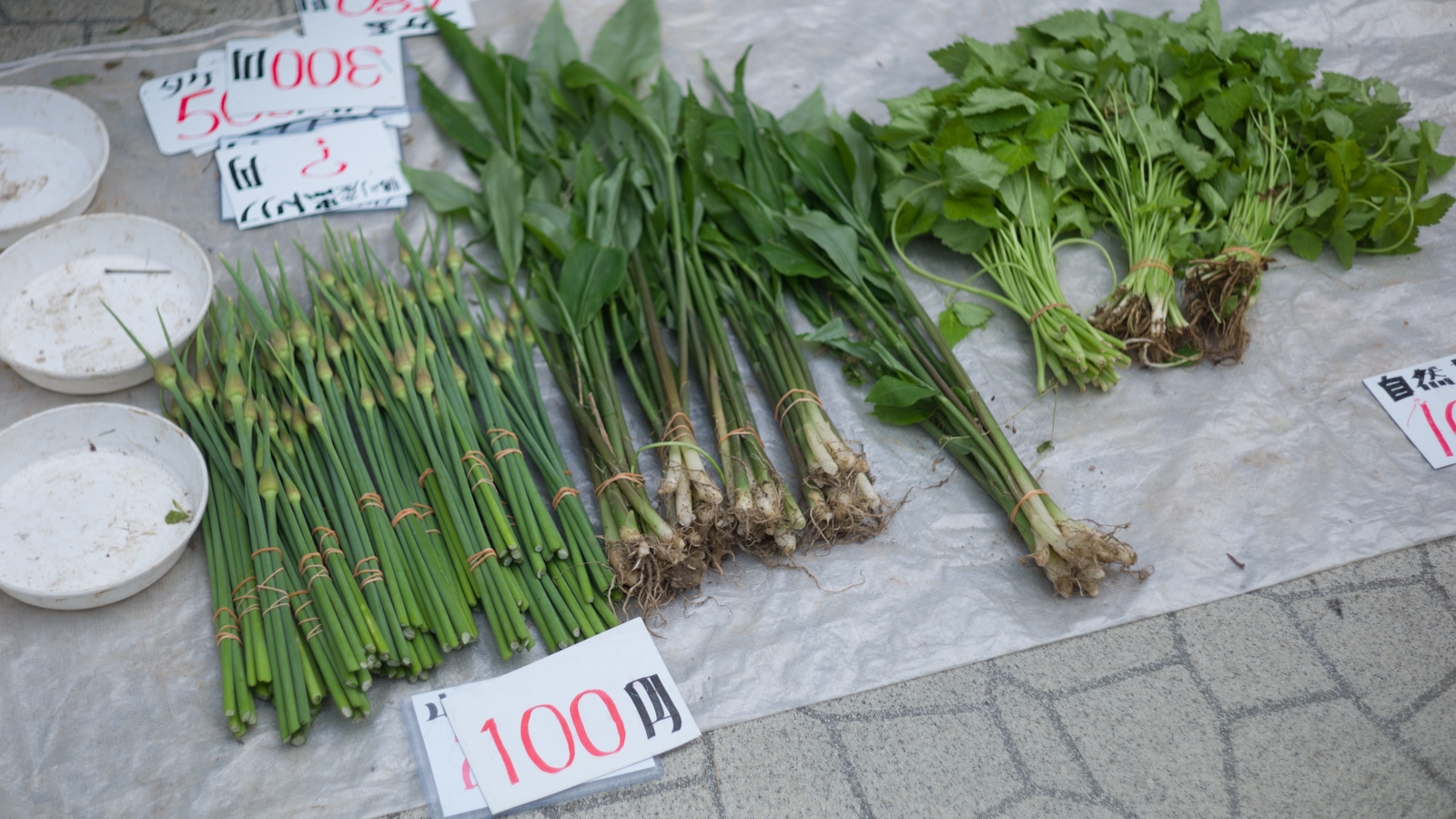
Garlic, Myoga and Mitsuba, local specialties of spring.

Warabimochi, a sweet made from wild fern, can often been found year round all over Japan, but this is the season of the ferns and they taste much better!

Bonitos straight from the port
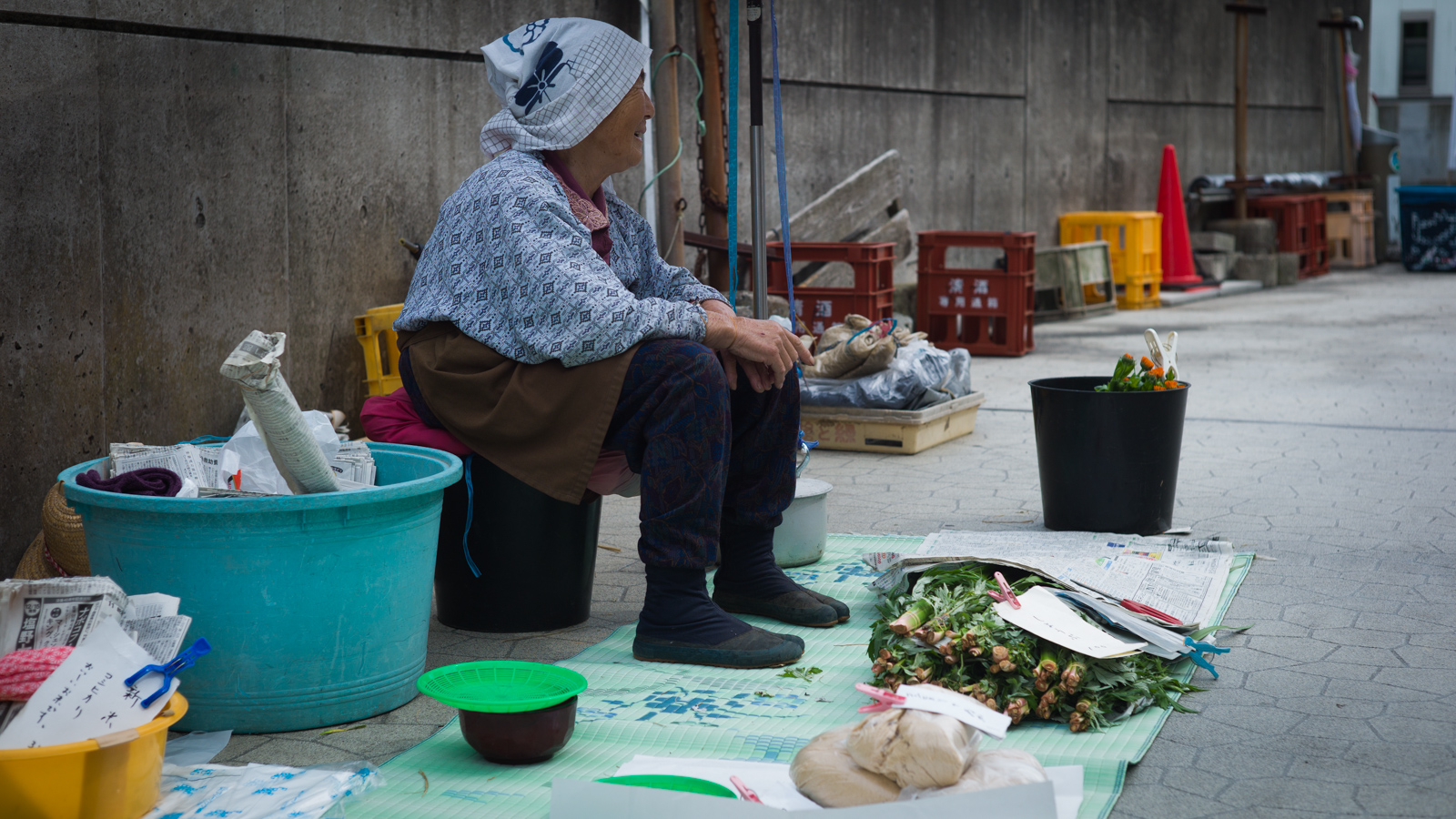
Wild vegetable vendor who probably collect these from a nearby mountain.
Chiba is a land full of Marshes, when summer comes these marsh fields are covered with beautifully purple Ayame (Iris), this flower is another popular item for sell as a decorative flower. On the other side near the Shrine, I saw this elderly lady cheerfully enjoying her own shaved ice.
The morning market started only as a small market for exchange of goods 400 years ago by the local landlord. 400 have passed and everything pretty much stayed the same, the shops, the people, the culture. This respect for tradition is probably a defining trait of the nation and the reason it is loved by people around the world.
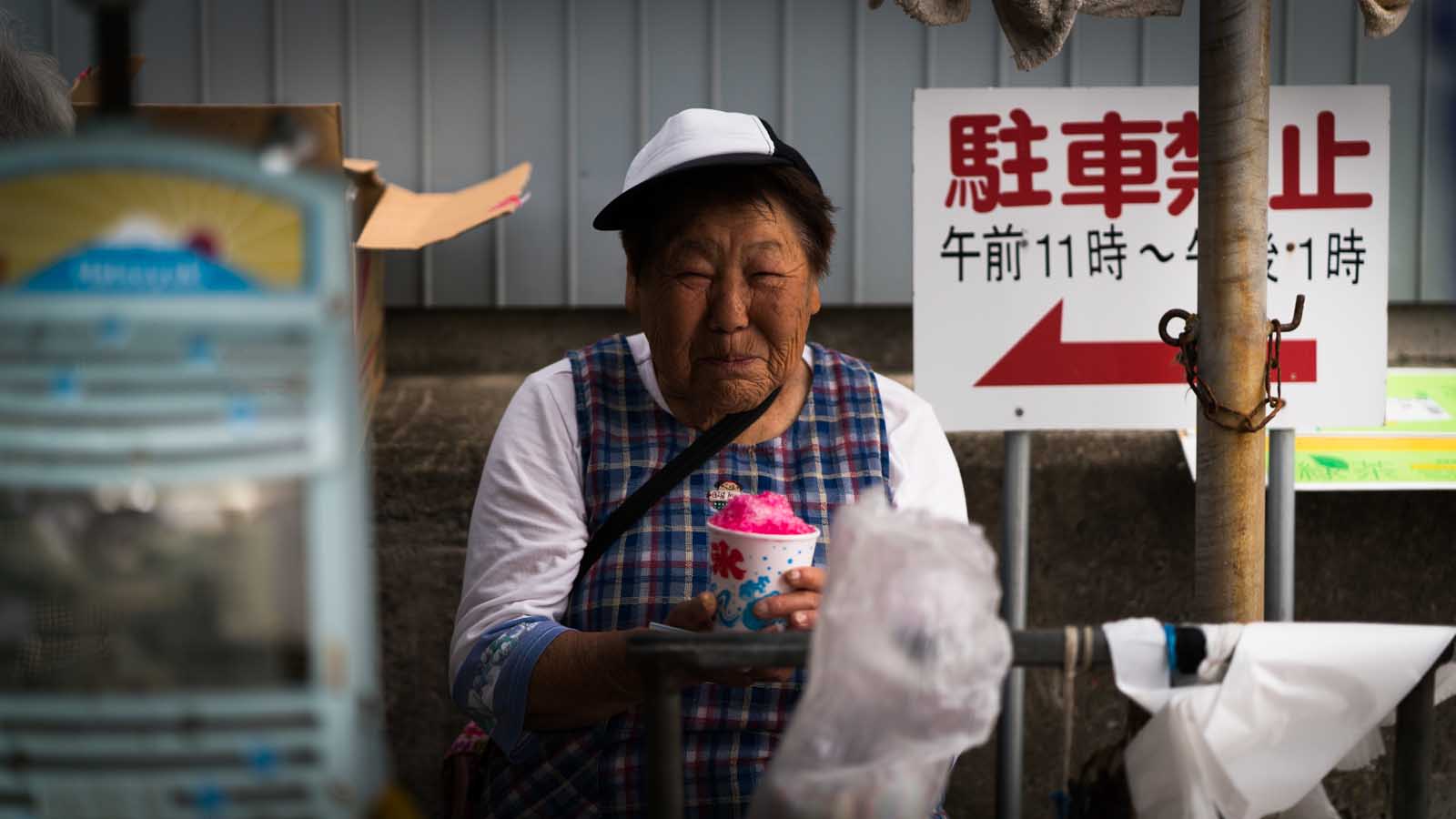
The products sold here are mostly farm and sea produces, exactly like what it was 400 years ago, except for perhaps this shaved ice.
Fresh seafood rice from the sea 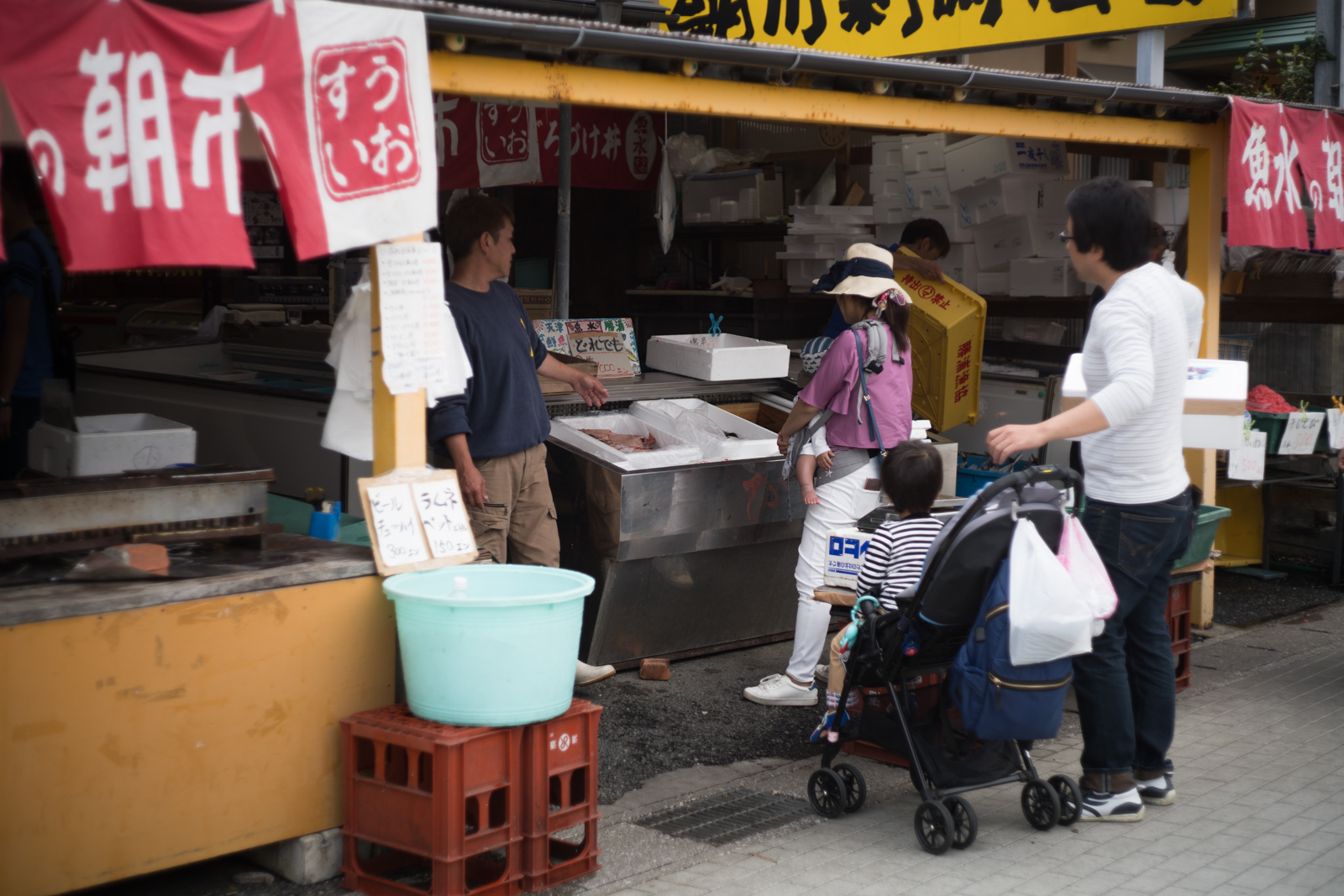
As the morning market closes by around 10, crowds, locals or tourists alike, move towards one of the many (maybe as much as 10) seafood restaurants on the streets between the market and the port. They are both restaurants and supermarkets, selling seafood, fresh or dry, and seasonings, seaweed and sometimes rice too. It is common to see local women buying fishes for today's dinner.
The restaurant we went to features a rather wide variety of sashimi rice and shell miso soup. But being in Katuura in the midst of the Bonito season, I couldn't help to go for a bowl of Bonito Sashimi rice (600Yen)! Local live Oysters are on the feast too, I got them for 300 Yen (Normal Oyster) and 400 Yen (Rock Oyster) respectively.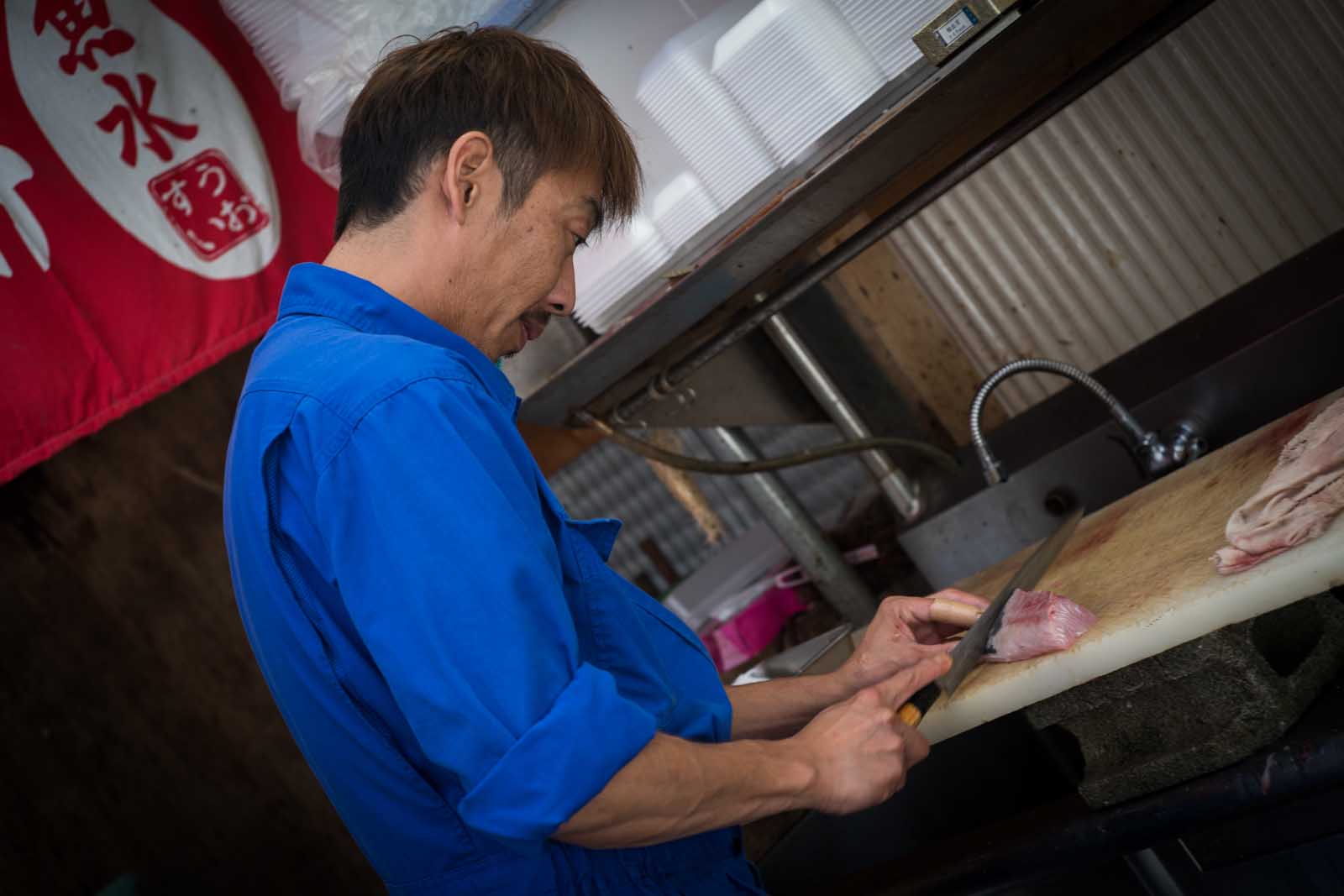
All Sashimi on the rice bowl are sliced on order
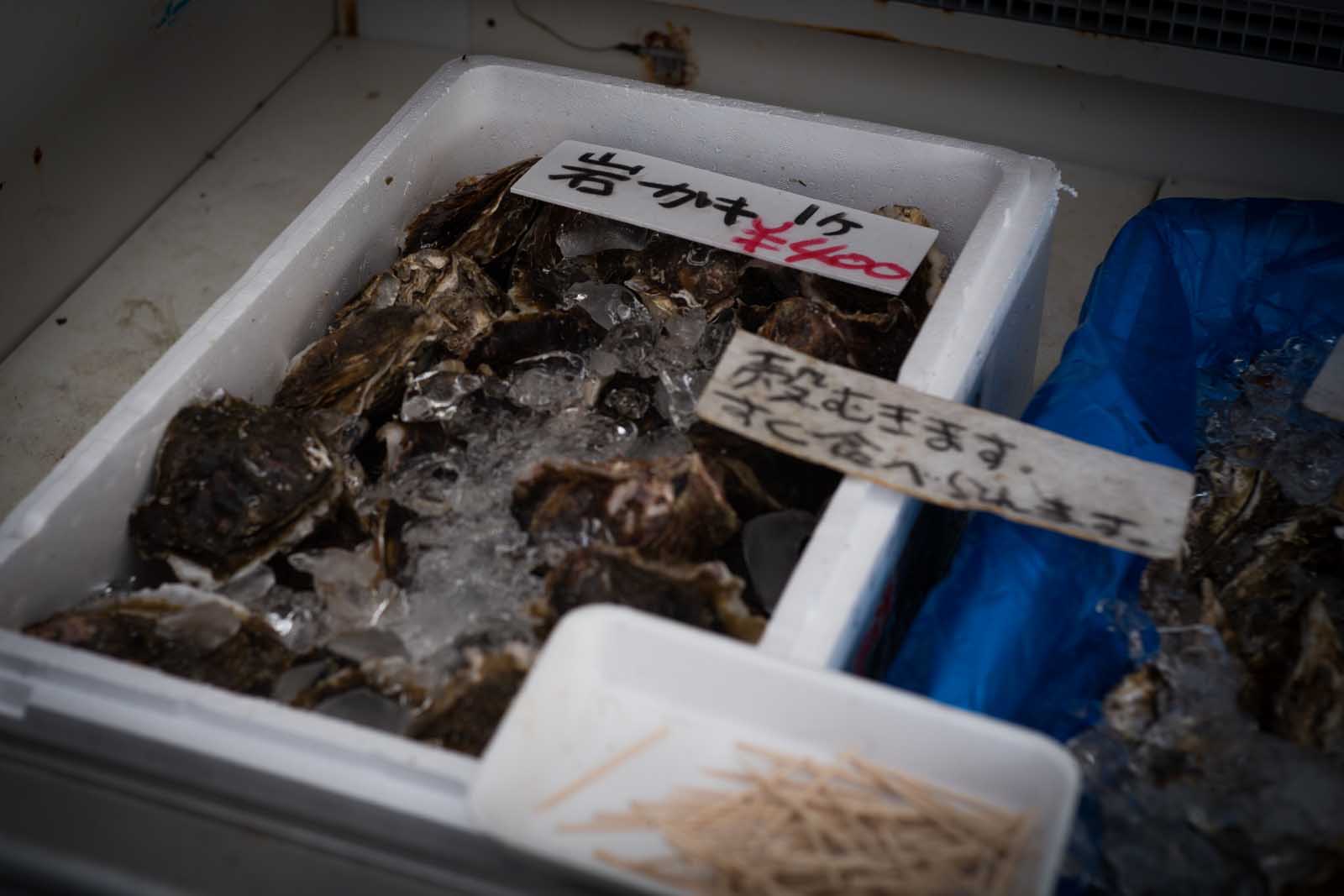
Two types of oysters, "Rock Oyster"岩ガキ400Yen・"Normal Oysters"真カキ300Yen

Bonito Sashimi rice and Oysters
Bonito is a typical "red fish" and is enjoyed for the slight taste of blood. Just like its cousin, the tuna, bonito spoils quite rapidly. With all the handling, it takes at least half a day to get these fishes from here to the shops and supermarkets of Tokyo. This is why they are often enjoyed with raw ginger, garlic and wasabi to help with the slight fishiness that is a result of the transportation. Here however, 5 minutes from the port, these fishes are good to go with just a dip in Soy sauce and wasabi for taste!
The Oysters are mildly mineraly and crisp, which is not what you'd normally expect from creamy Hiroshima Oysters. For raw oysters, I like the ones here better! (The Hiroshima ones if cooked)
Bonito is of course sold cheaply in all outlets, here's a tips for choosing them, look for ones that are blueish-purple, shiny and shows clear mosaic patterns on their skins. Slimy surface is certainly to be avoided! I am sure you will not need this advice in Katsuura but it is still nice to know when you want more after you go home!
Abalones are also sold for a fraction of what they normally fetches in the markets of Tsukiji!

--------------------------------------
Location:Asaichi fresh market / 朝市新鮮廣場
136, Katsuura, Katsuura, Chiba
--------------------------------------
Now you may be in a hunter food gatherer mood, it is necessary to mention that economic sea produce (Abalones, Turban Shells, Sea urchins, edible seaweeds) on the shores of this municipality are properties of the municipality. Any attempt to collect these produces for consumption of sales is considered theft, and this is tightly watched!
What to do with the fresh food?
Coming back to the cooking problem, where should we cook them?
It turns out there is a hotel that features a kitchen and I decided to take a look.
From outside the Katsuura Hilltop Hotel and Residence looks like an ordinary hotel standing on the foothills of a small hill to the west of the town.
So is the hotel lobby which is just like any other hotel lobby, but once shown the family room I am surprised this is indeed not a normal hotel!
First of all the flooring are wood instead of carpets, and the floor planning resembles a normal (somewhat big) Japanese family apartment rather than a hotel room.
Not just the floor plan, but furniture and fittings are all what you would expect from a normal household, including cooking utensils, forks, knives, chopsticks, dishes and a stove!
The sofas face east, and is the perfect setting for a nice morning view of the sunrise before heading out for a day in the town.
If you plan to stay for any extended period, the washing and drying machines are definitely a plus, especially when most outdoor activities on the beaches are likely to make you wet!

Two bedrooms of this type if you choose the 4 people's room.
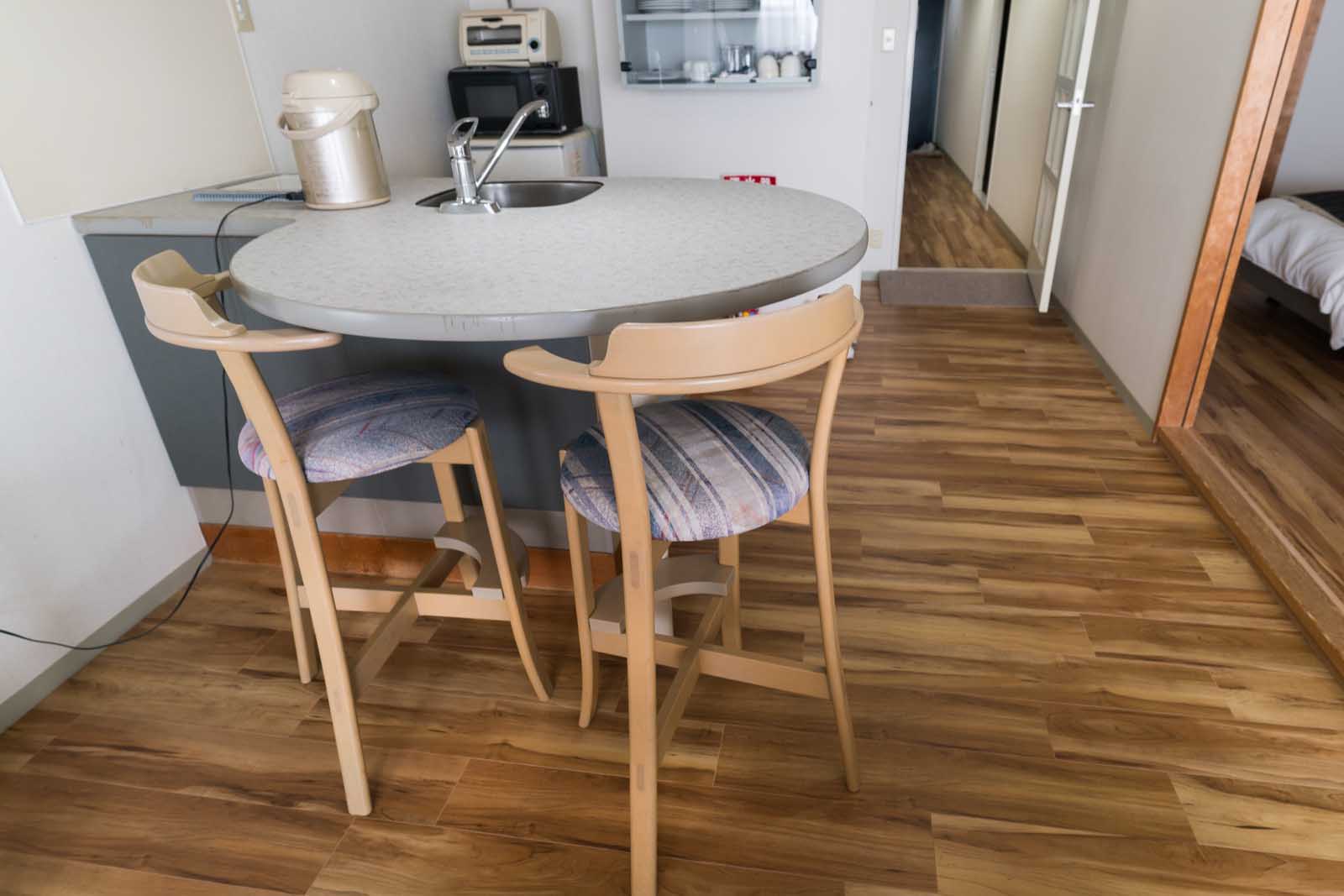
Dormitory

An electric stove we kitchen lovers yearn for!! A real fire would have been even better but Japanese regulations are strict on installing such stoves in a hotel.
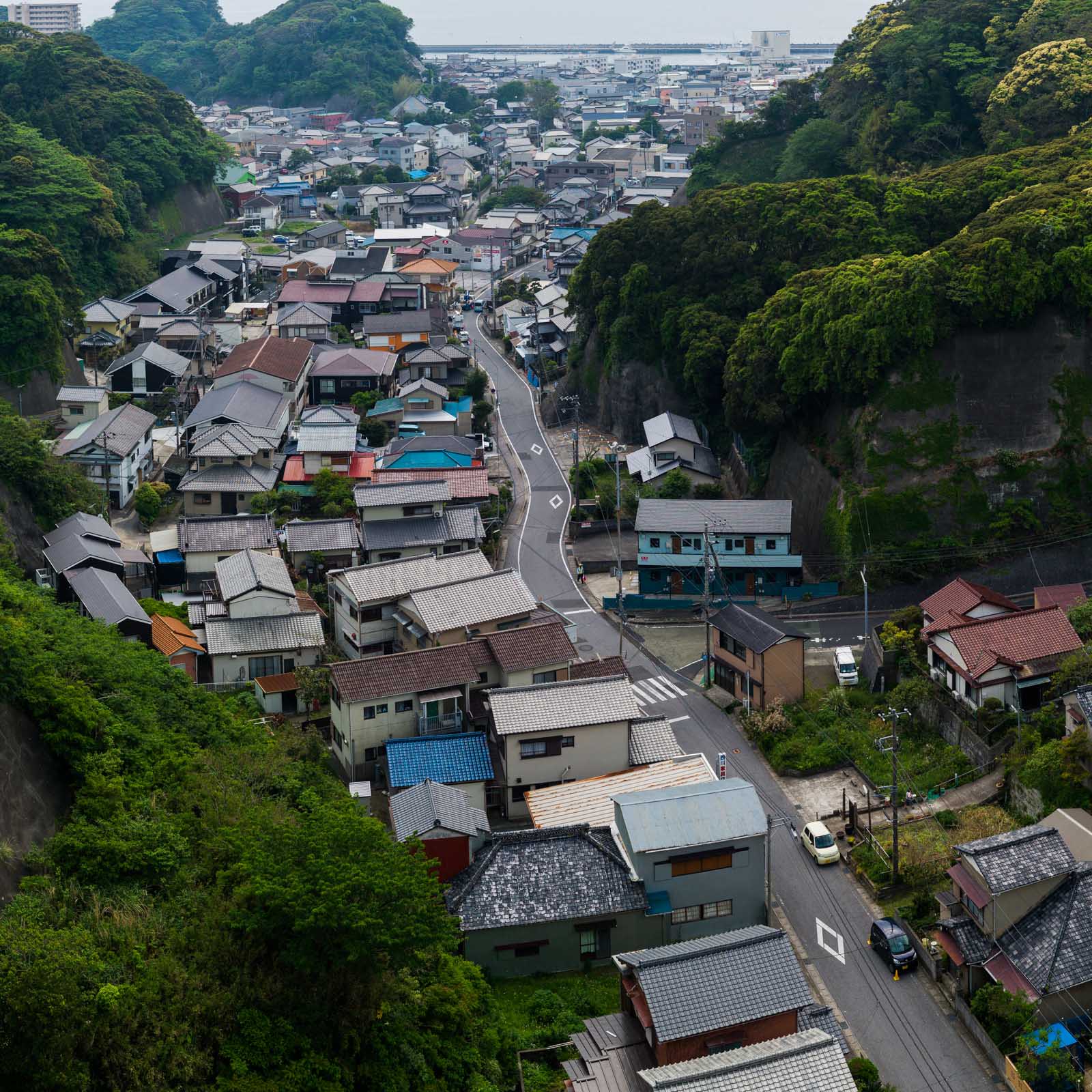
A panoramic view of the silent little village
--------------------------------------
Location:Katsuura Hilltop Hotel and Residence
441-1 Sawakura, Katsuura, Chiba
--------------------------------------
Food alone is not enough! Two Japanese Sake Breweries operate in this area, "Koshigoi" and "Higashinada". Both can be found in the Takeguchi Wine Store near the Station. If Sake is not your thing, the shop also features wine, beer and liquors, The Kujyukuri Craft Beer (九十九里ビール) is not exactly local but is from not far away and is totally worth a try! But I DO recommend the Sake!
If Sake is not your thing, the shop also features wine, beer and liquors, The Kujyukuri Craft Beer (九十九里ビール) is not exactly local but is from not far away and is totally worth a try! But I DO recommend the Sake!
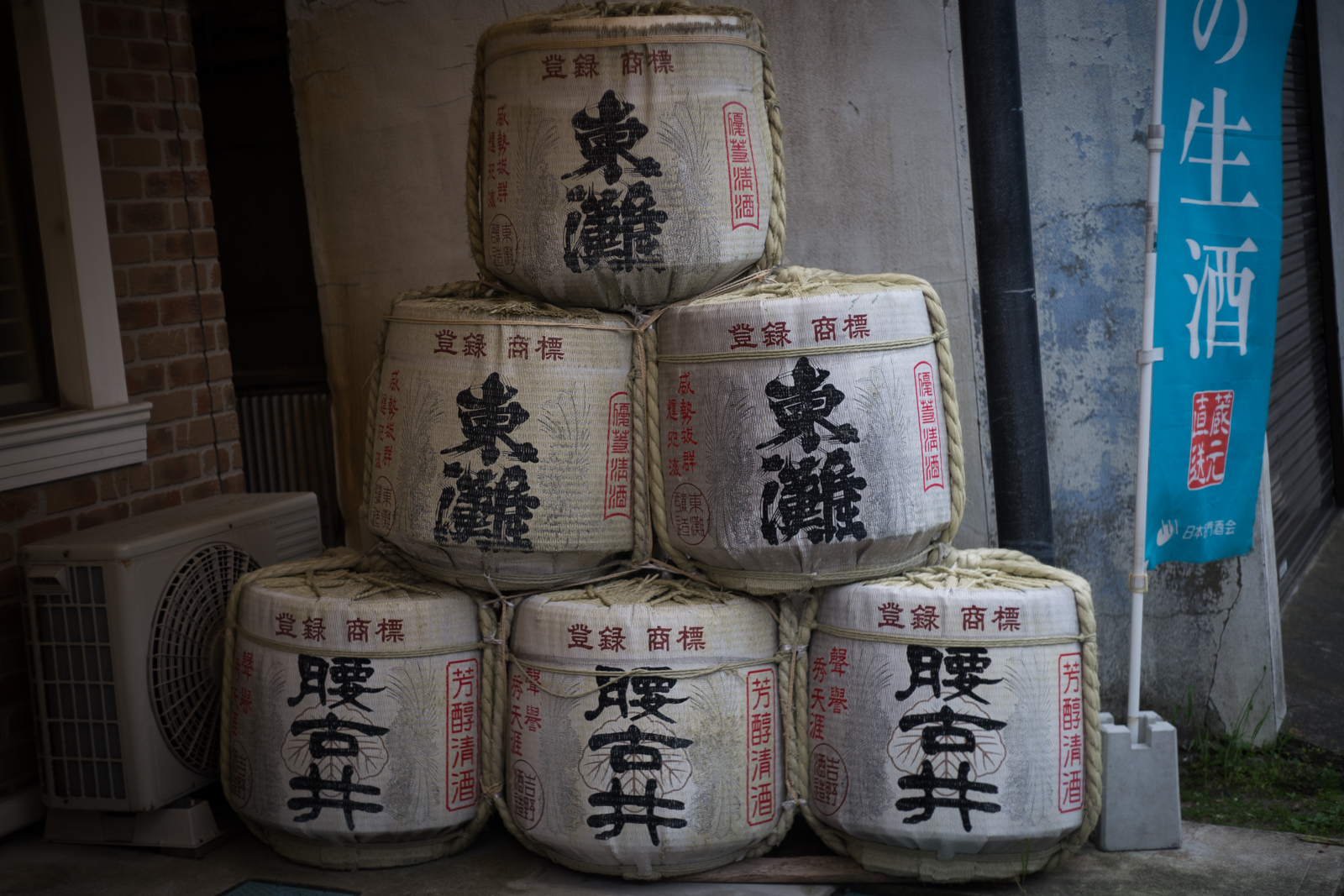
"Koshigoi" 「腰古井」 and "Higashinada" 「東灘」
--------------------------------------
Location:Takeguchi Wine Shop
815 Tona, Katsuura, Chiba
--------------------------------------
So how was this virtual trip, a place near the sea where you can eat out or cook your own dishes of Bonitos, Shells, Wild vegetables, feel the sea breeze of spring! Bonitos are heading North towards Aomori, Northern Japan, gaining weight as they travel. In Autumn, those lucky enough to escape humans will turn fatty, face their destiny when they will be treated as another kind of delicacy, I am ready to come back for them!
In the next post, I will talk more about the natural landscapes, cultural heritages and... more food! About Katsuura!


